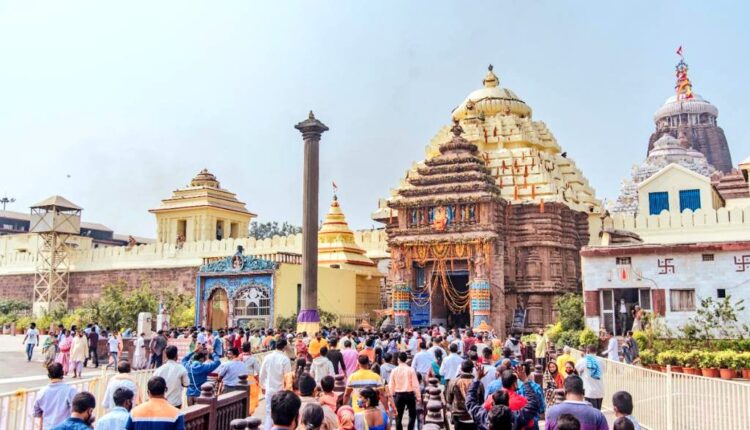By Biswanath Dash*
The death of a person, on T-bridge connecting Gopinathpur in Badamba Bridge to Singhanath temple, on the occasion of Makara Sankranti and a stampede like situation in Puri Temple occurring twice in the last few weeks, brings to the fore the question of crowd management at religious places in the state. Major temples in India are witnessing huge rushes since the time pandemic induced restrictions were eased. For example, lakhs queued up at Puri on New Year day for Lords’ darshan. Several measures have been introduced in recent times to manage increased number of pilgrims at Puri Temple. They include; barricaded entry from the Lions Gate or Singha Dwara while allowing exit from other gates; regulated entry at the main entrance of Jagannath Temple; monitoring through close circuit television (CCTV) cameras; deployment of additional security staff both inside and outside the temple. The question however is; are these measures helpful to ensure a peaceful darshan for those who travel from the remotest part of Odisha and the country? Which other measures should be considered to mitigate potential stampede risk during an extreme rush period? This aspect is important because for devotees, Lords’ darshan experience is central to their visit and hence no efforts should be spared in making it a fulfilling experience.
Regulating Inflow: How many devotees should be allowed inside the temple premise and how many inside the Jagannath Temple? It is understood that such questions are contingent upon number of visitors on a given day, however planning for extreme cases are helpful for large gathering. Puri temple has perhaps consciously avoided registration system as found in other major temples of India. It blends well with the cultural ethos where devotees have the liberty to visit the temple several times a day. It makes the management even more challenging because of absence of estimation of number of visitors on a daily basis. It is thus left for the temple administration to blend general preferences for open darshan with practical management requirement much more creatively. A related aspect is crowd density or determining the number of persons to be allowed within a given time/space. This translates to dividing long queues into smaller batches. The density index requires careful planning, because a lower value is preferred although managing long queues will demand enhancement. In contrast a higher number results into cramped space increasing the risk of a stampede.
Stampede Triggers: A vast majority of stampedes in India have occurred during religious gatherings and a variety of factors are identified as triggers. For example, rush of people to enter or move out of a particularly cramped area, collapse of a temporary or permanent structure, rumors etc. The last in particular is often of varied form and generally difficult both to anticipate and quell. In addition, fainting or falling down of devotees in itself can lead to a situation that can go out of hand. Stampede incidents have occurred at Puri temple at various time for example in 1993, 2006, 2013 etc. and following inquiry commissions’ recommendations several measures are introduced. It is not entirely clear though how new system of crowd management makes use of latest technologies. For example, using CCTV monitoring of crowded sections through artificial intelligence or quick dispelling rumors through public announcement on a real-time basis.
Regular updates: A significantly higher number of people visiting Puri during a particular period invariably means some amount of waiting time. A devotee is understandably impatient and in such case, can countdown timers giving a sense of an approximate time to enter the temple or for that matter regular updates through videos/display board be considered? Countdown timer at traffic squares for example, are found quite useful in making motorist mentally adjust to the waiting period. Boards displaying status of various rituals have already been installed at a few places in Puri Temple. A more comprehensive use of such tools will ease the pressure on those personnel involved in an unenviable task of handling a crowd of pilgrims.
The efforts of Odisha Government to redevelop the holy city of Puri deserves appreciation. Notwithstanding inconveniences faced in the interim, it is expected that a visit to the abode of Lord Jagannath will be altogether a different experience in due course of time. It is vitally important that focus is not restricted to infrastructural development, and adequate planning is made for managing pilgrims’ visit to the shrine. After all, it is that experience which lies at the center of all. Puri’s Jagannath Temple being the most famous in Odisha, its approach to crowd management will set examples for other temples in the state.
*The author teaches at BITS Pilani, Hyderabad Campus.
DISCLAIMER: The views expressed in the article are solely those of the author and do not in any way represent the views of Sambad English.


Comments are closed.